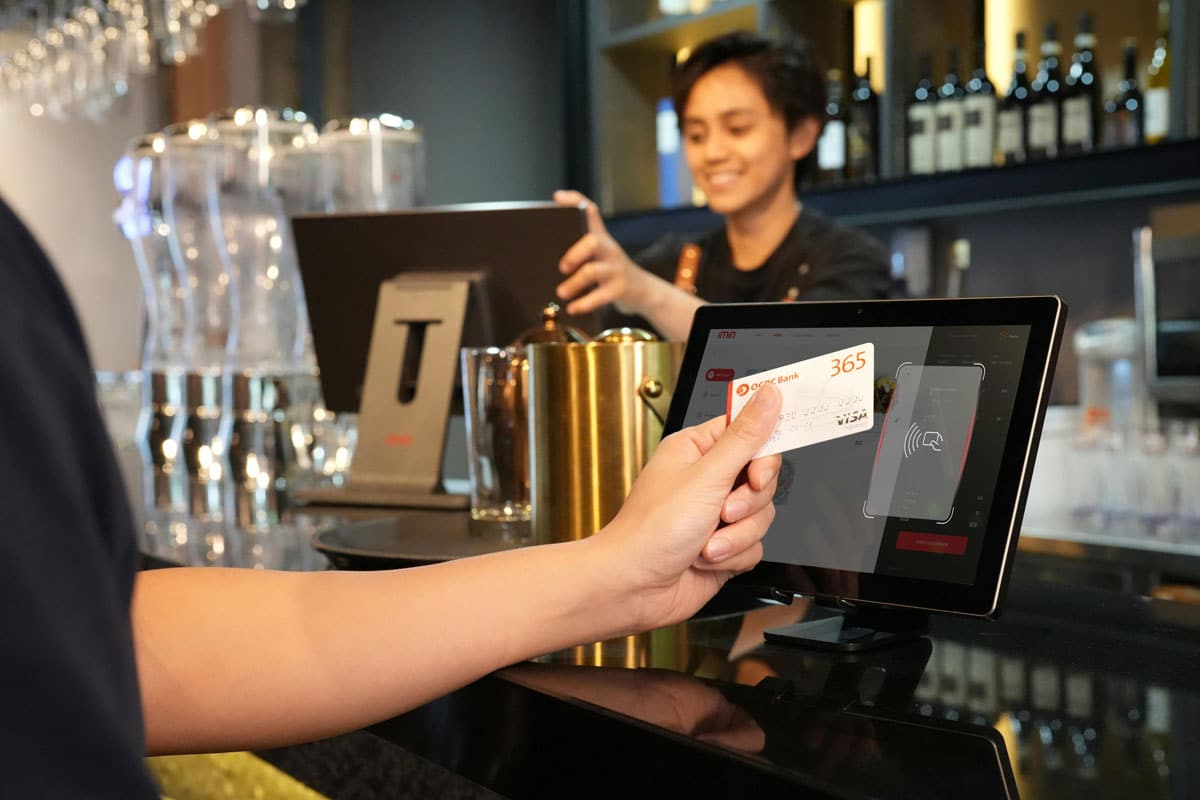Smooth, seamless payments via card readers help distinguish your business from the competition. Whether you’re running a small boutique or the sales department of a large enterprise, grasping the mechanics of card readers is crucial for ensuring a hassle-free checkout experience.
In this guide from Payment Nerds, we’ll explore the different types of credit card readers, how they work, and the various ways they can benefit your business.
What Are Card Readers?
A card reader is a device that enables merchants to accept and process payments from credit and debit cards[1]. It links the customer’s card to the payment processor, quickly exchanging payment details and authorization. This device also ensures secure credit card processing so funds can be transferred safely to your business account.
Today’s card readers offer more than just the basic “swipe and go.” They support both card and contactless payments, including chip reading, “Tap to Pay” features, and integration with digital wallets. Card readers can function as standalone devices or as part of a point-of-sale system.
Depending on your business’s requirements, you can select a payment solution that fits your goals, budget, and customer preferences.
How Do Card Readers Work?
Card readers work by securely transmitting payment information from the customer’s card to the payment processor. Here’s a step-by-step breakdown:
- Card Interaction: The customer either taps, dips, or swipes their card through the reader. For tap payments, the card utilizes near-field communication (NFC) technology. When dipping, the chip is read, and for swiping, the magnetic stripe is scanned.
- Encryption: The card reader encrypts the payment data to safeguard it from unauthorized access.
- Data Transmission: The encrypted data is sent to the payment processor, which verifies the transaction details with the card’s issuing bank.
- Approval: Once approved, the transaction amount is deducted from the customer’s account and transferred to the merchant’s account.
This entire process occurs within seconds, making electronic payments efficient and convenient for both businesses and customers.

What Types of Card Readers Are Available?
No matter the type or size of your business, there’s a card reader to match your needs. Here are three main categories to look for:
Countertop Card Readers
You’ll usually find these traditional credit card readers in brick-and-mortar stores. They are often fixed in place and connected to a point-of-sale terminal, though they can also operate through a phone line or internet connection[2].
Modern countertop readers typically accept all card payment methods, including swiping, dipping, and tapping. They’re also ideal for businesses with permanent locations, such as retail shops and restaurants.
Mobile Card Readers
Mobile card readers are often mobile devices that connect to your smartphone or tablet. They can process payments through virtual terminals or retail payment gateways[2].
These devices are perfect for businesses on the move, like food trucks, pop-up shops, and service professionals. Mobile readers also offer unmatched flexibility, enabling you to accept payments anywhere.
Integrated POS Card Readers
These readers are seamlessly connected to a POS system. They can be attached to mobile devices or integrated into point-of-sale terminals, allowing customers to pay by swiping, tapping, or inserting their cards.[2].
An integrated POS card reader merges payment processing with additional features like inventory management and sales tracking. It has become common in medium to large-sized businesses that rely on efficiency and data analysis.
What Ways Can You Make Payments Using Card Readers?
Card readers accommodate a variety of payment methods to meet different customer needs. Here’s a close look at each card payment method:
Tap Payments (or Contactless Payments)
Contactless payments are becoming more popular due to their speed and convenience. With tap payments, customers simply hold their card or device close to the reader. You can perform a tap payment with a chip-enabled card or a smartphone. We detail each type below:
Tap Your Chip Card
Modern cards equipped with a near-field communication (NFC) or radio frequency identification (RFID) chip allow customers to tap their cards on the reader. The chips transmit the card’s payment details instantly to countertop or mobile card readers, allowing businesses to process transactions almost instantly.
Tap with a Mobile App or Digital Wallet
Smartphones perform tap payments using the same NFC technology. However, these transactions involve digital wallets such as Apple Pay, Google Pay, and Samsung Pay. This new transaction system allows customers to make secure payments while eliminating the need to carry physical cards, reducing the risk of loss or theft.
Swipe Debit/Credit Card Payments
Swiping a card traditionally involves sliding its magnetic strip through the reader. The strip contains the customer’s payment details, which card readers can decipher[3]. While still commonly used, this method is being phased out in some areas due to security issues.
Dip Debit/Credit Card Payments
“Dipping,” or inserting your card, is a relatively new way to process card payments. In this method, the customer inserts the card’s chip into a slot in the reader and keeps it there until the transaction is finalized. Once dipped in, the reader lifts the payment information directly from the chip[3]. This method provides enhanced security by generating a unique code for each transaction.
Make sure your business has numerous ways for customers to pay. Sign up with Payment Nerds, and we’ll provide you with advanced security, custom payment processing solutions, and more.
Benefits of Card Readers for Small Business Merchants
Small businesses can enhance their competitive edge by accepting card payments. Here’s how:
- Increased Sales: By accepting cards, you serve a wider range of customers, thereby increasing the number of potential sales.
- Portability: Mobile card readers enable you to handle payments on the go. This further expands your customer base while giving your business additional flexibility and convenience.
- Professionalism: Card readers that accept trusted card networks help boost your brand’s credibility and foster trust.
- Faster Transactions: Quick checkout processes lead to a more satisfying customer shopping experience.

Benefits of Card Readers for Large Enterprise Merchants
For larger businesses, credit card readers simplify operations and improve customer experiences:
- Scalability: Integrated POS systems can expand to accept high transaction volumes with ease.
- Data Insights: Advanced card readers may include analytics on sales trends and customer behavior.
- Efficiency: Automated processes minimize human error and accelerate transactions.
- Custom Solutions: Enterprises can connect card readers with their current systems for smooth operations. For example, integrating your card readers with existing accounting systems can allow you to create customizable invoices for specific customers and vendors.
In Summary
Card readers are essential for today’s commerce, providing speed, security, and convenience for businesses of all sizes. Whether you own a small coffee shop or a large retail chain, choosing the right card reader can significantly impact your operations.
At Payment Nerds, we’re dedicated to helping you discover the ideal payment solution that fits your individual needs. With our knowledge and custom solutions, you can create a checkout experience that your customers will appreciate.
Let’s work together to make payment processing smarter, faster, and easier. Reach out to Payment Nerds today to get started!
Sources
- Lenovo. “What is a card reader?” https://www.lenovo.com/us/en/glossary/what-is-card-reader/. Accessed January 16, 2025.
- Business News Daily. “Credit Card Machines: Answers to Frequently Asked Questions.” https://www.businessnewsdaily.com/8940-credit-card-machines-faq.html. Accessed January 16, 2025.
- Investopedia. “Card Reader.” https://www.investopedia.com/terms/c/card-reader.asp. Accessed January 16, 2025.











